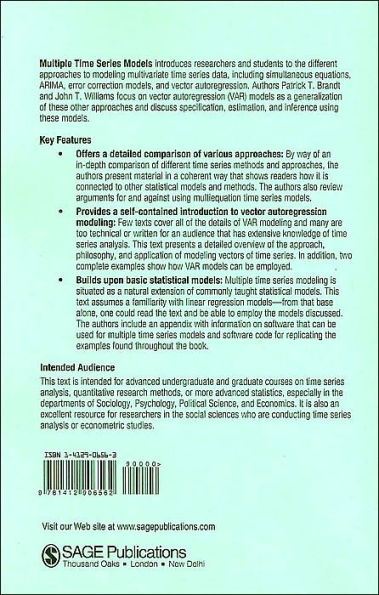5
1
9781412906562


Multiple Time Series Models / Edition 1 available in Paperback

Multiple Time Series Models / Edition 1
- ISBN-10:
- 1412906563
- ISBN-13:
- 9781412906562
- Pub. Date:
- 09/21/2006
- Publisher:
- SAGE Publications
- ISBN-10:
- 1412906563
- ISBN-13:
- 9781412906562
- Pub. Date:
- 09/21/2006
- Publisher:
- SAGE Publications
42.0
In Stock

Product Details
| ISBN-13: | 9781412906562 |
|---|---|
| Publisher: | SAGE Publications |
| Publication date: | 09/21/2006 |
| Series: | Quantitative Applications in the Social Sciences , #148 |
| Edition description: | New Edition |
| Pages: | 120 |
| Product dimensions: | 5.50(w) x 8.50(h) x 0.23(d) |
About the Author
From the B&N Reads Blog



